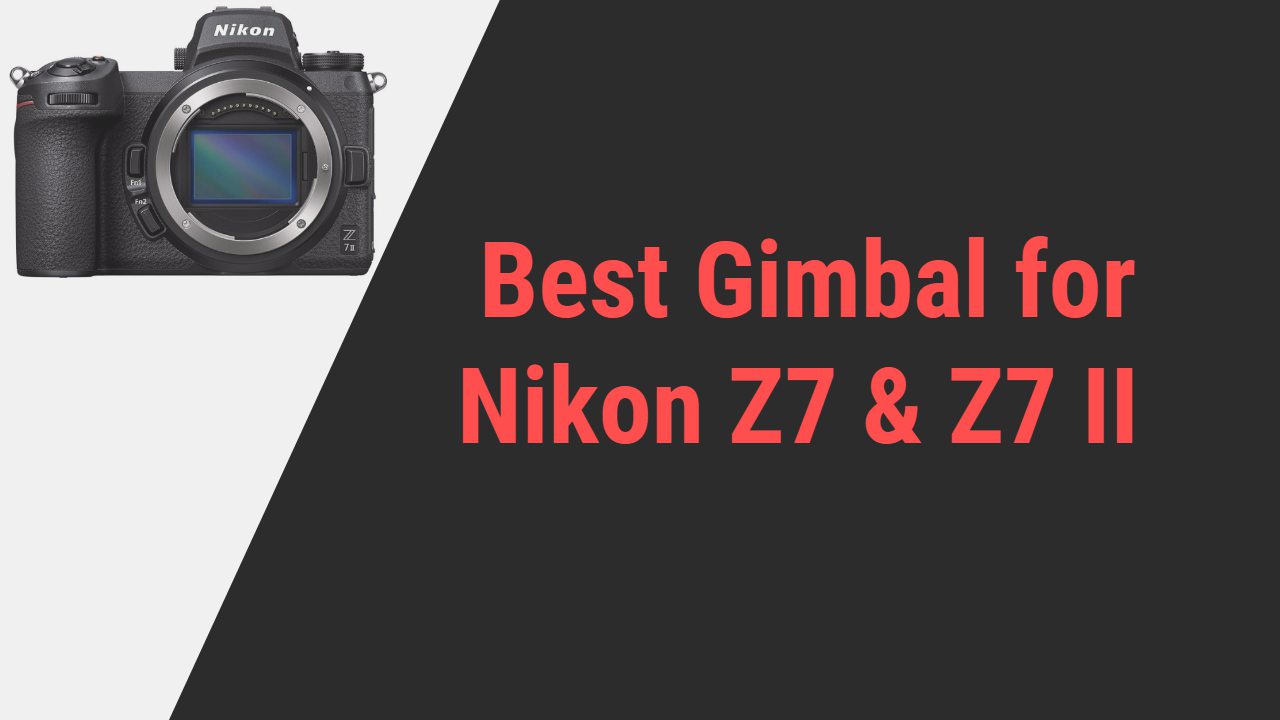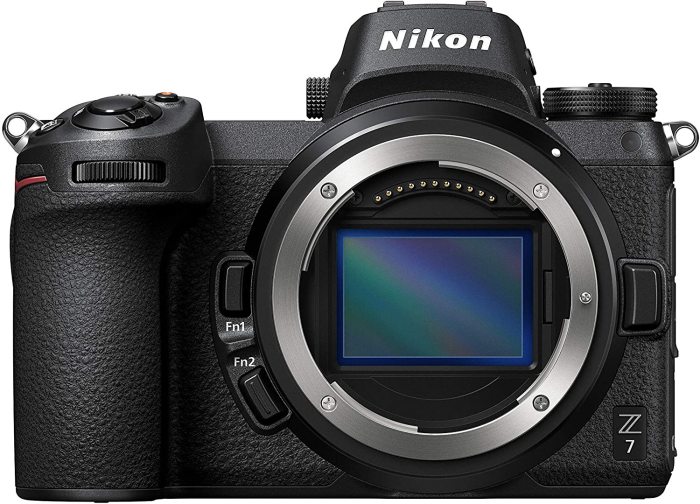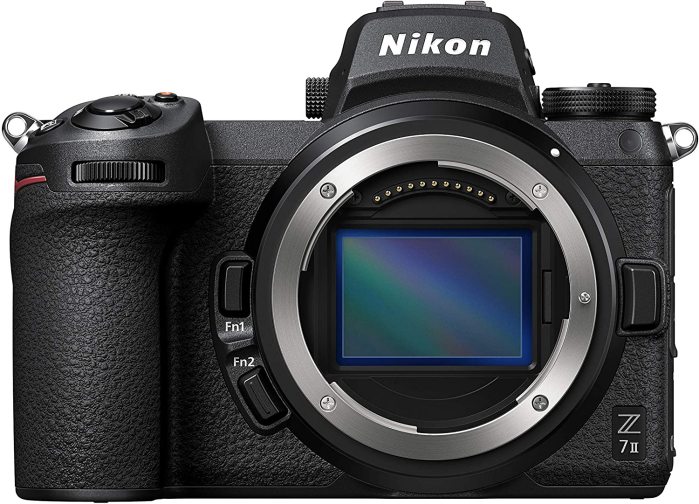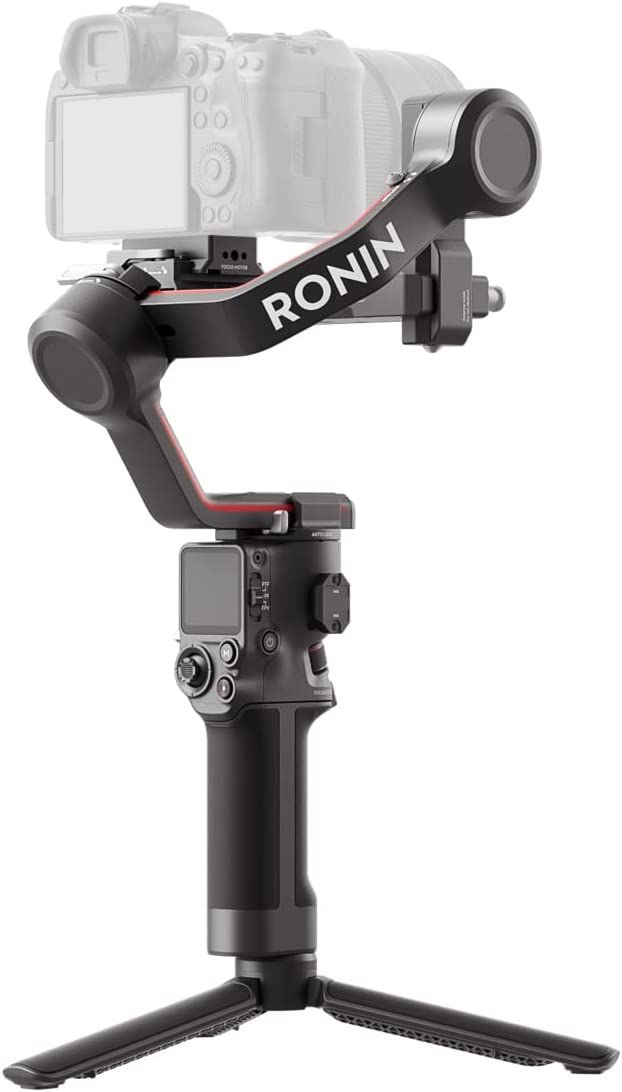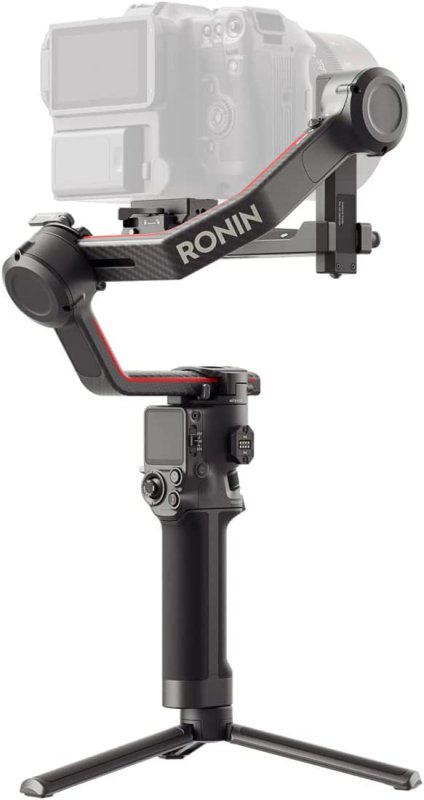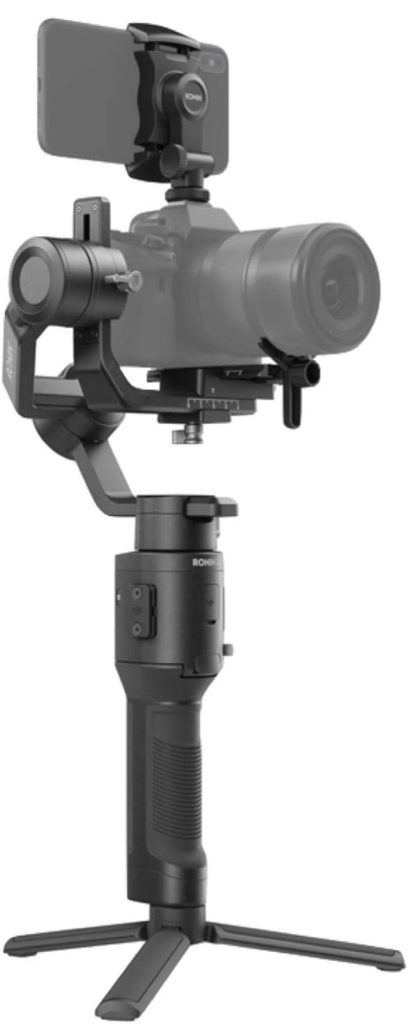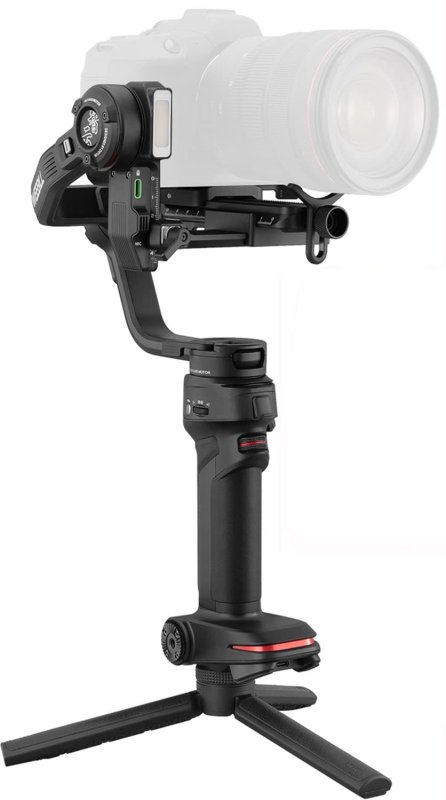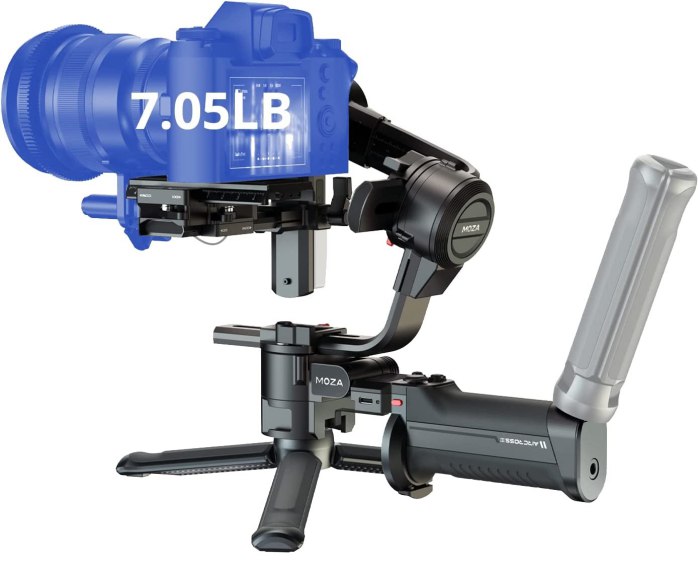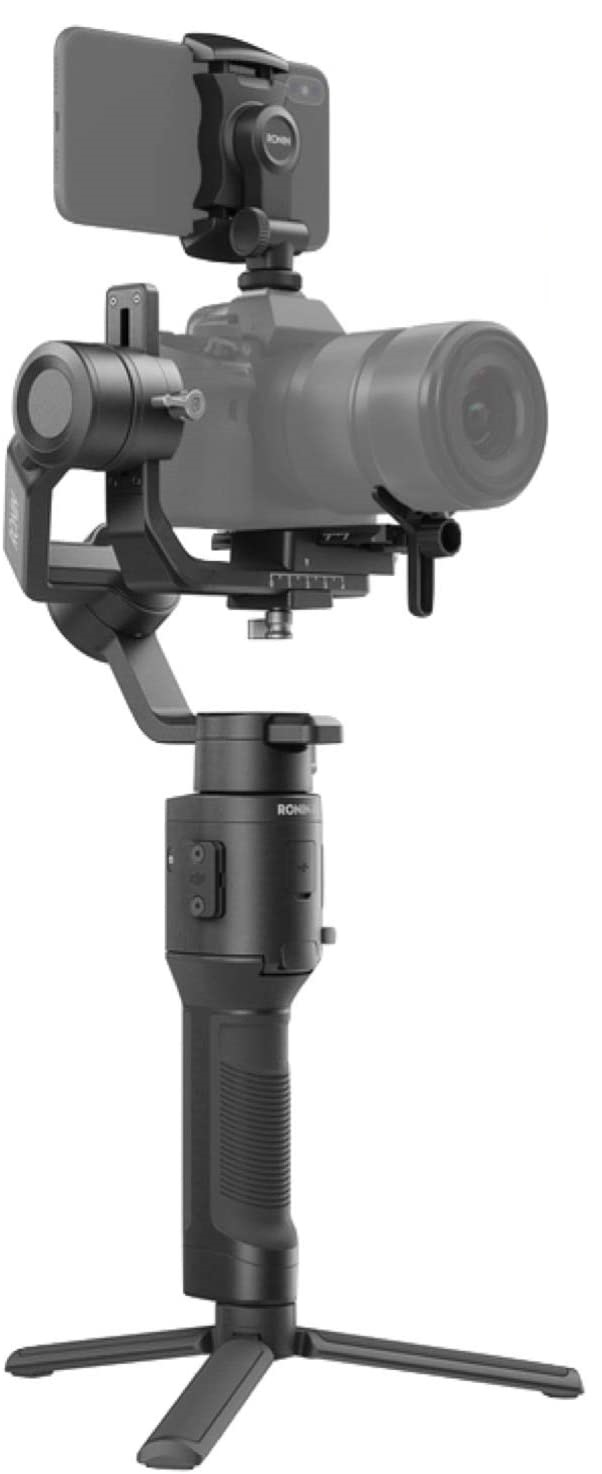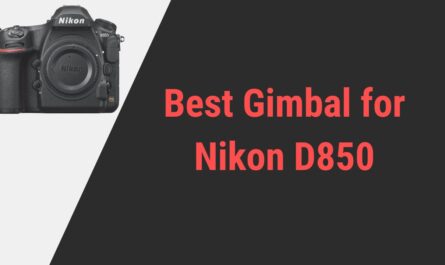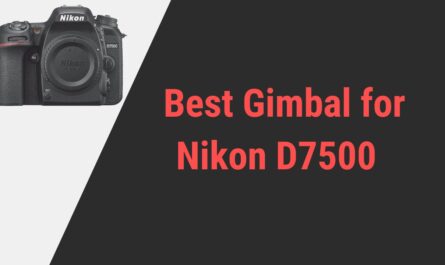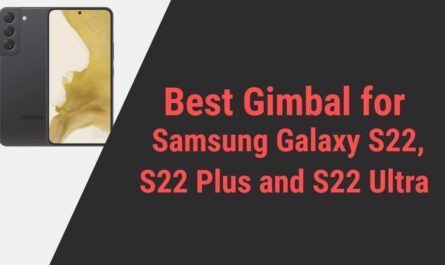Whether a keen or a professional, no one, I repeat, no one can question the unrivaled competency of the most Iconic brand Nikon. The brand has been leading as the wisest when it comes to digital camera appliances.
There’s something unique, something fascinating about Nikon’s Z7 series, and two of the most effective fruits of that series are Z7 and Z7 II.
Both Nikon Z7 and Z7 II are consumed with miraculous properties, unbeatable performance, and out-of-world design; overall, both cameras can be used by professionals or beginners.
Even with such advances as these cameras, you cannot trap professionalism without certain tools, Like a gimbal. Gimbals are one the best stabilization tools counted as essential by experts that minimize camera shake and deliver the best cinematic footage.
| DJI RS 3 (Best Overall)
      |
| DJI RS 3 Pro (Most High-end - Highest Payload Capacity & Comes with Advanced Features)
      |
| DJI Ronin-SC (Cheapest - Low Payload Capacity)
      |
| Zhiyun Weebill 3 (Another Gimbal with Great Features)
      |
| MOZA AirCross 3
      |
On the internet or in physical stores, the market is overflowing with different variations of the gimbal. Different brands, different payloads, different intelligence, which gimbal is best for Z7 and Z7 II, and what if you get the wrong one for your dearest camera?
For your freedom from such chaos, I have brought my personal use and inspected top-notch gimbal options for Nikon Z7 and Z7 II. Let’s get started then
Best Gimbals for Nikon Z7 and Nikon Z7 II
1. DJI RS 3 – Best Gimbal for Nikon Z7
Have you ever thought that what makes a purchase is “The purchase”; the characteristic of the product and the brand itself? When it comes to gimbals, you cannot afford any risk, which is why I suggest you try the well-known and trusted brand, Something like DJI.
Oh yes, DJI is famous for not leaving any opportunity that makes something innovative and fruitful out of their expertise; Something like DJI RS 3
Gimbal – DJI RS 3 Gimbal
Camera– Nikon Z7
Highlights– Basically, the RS 3 by none other than the DJI Ronin itself is a redesigned camera stabilizer that is meant to be lightest and more comfortable. The gimbal situates with the lightest 2.8 pounds weight while carrying the potential to carry 6.6 pounds.
The easy mounting, creative modes shooting, and many other features have the tendency to last the longest for up to 12 hours on a single charge. All with the sugar coating of an affordable price tag.
Why should you buy the DJI RS 3 Gimbal?
As you might have noticed, the gimbal has a quite fascinating power, all thanks to its upgraded third-generation motor, but the best thing the upgraded system does is carry the modernity and technology of the Nikon Z7.
Also, considering the Z7 size, weight, and controls, Dji RS 3 seems the best Gimbal for Nikon Z7. No more professional help in installation, calibration, or control; this gimbal is the perfect match to go with the Z7.
Creative Features–
Of course, they call this gimbal a masterpiece because of its upgraded third-generation RS stabilization algorithm. The updated tactic for providing 20% extra stability is similar to getting super smooth results through the increased motor torque only to get the best vision of low-angle shots, running subjects, and others.
The gimbal is super easy to control and handle, even with some advanced cameras like Nikon Z7. The user interface and wide 1.8-inch full-colored OLED panel with 80% extra display have given so much precise control and professionalism.
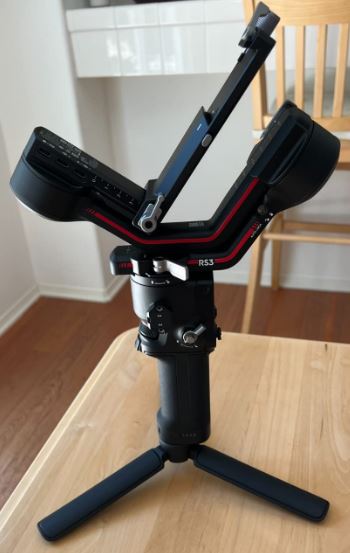

Rest the control can be managed through the wireless shutter control, which can be achieved by the secure pairing of Bluetooth. Also, the support of the Ronin Image Transmitter has been profoundly beneficial to me.
Through the ultimate support of Ronin’s official mobile phone application, integrated monitoring and control seems easier than other alternatives.
However, sometimes, when I don’t feel like going through this stuff, some of the essential things can be done through the integrated control dials.
The gimbal shooting mode can be adjusted by simple sliding, while the front dial can manage the zoom and focus. Also, love the fact of how fine tuning-knob goes through the camera slide forward and backward.
Then comes the power; see, I am compelled to shoot 330 shots in a single charge with the Nikon Z7, which is why I expect my gimbal to be super powerful.
The brand has configured the strongest battery in cartridge design empowered to 3000 mAh, one that provides up to 12 hours of battery runtime when charged fully. Also, the gimbal doesn’t bother taking forever to recharge again; 2.5 hours is enough to get things done.
The gimbal has the potential to carry hundreds of other accessories, which I assume can be the result of its potential to carry 6.6 pounds payload, considering when its own weight stays put at 2.8 pounds which is pretty amazing If you ask me.
The thing you can do with this gimbal is simply amazing; motion functions you get to shoot like Dolly Zoom, Time tunnel, and Motion lapse.
Bottom line- I have been using this DJI RS 3 for quite a while, and it’s been pretty outstanding so far. The intelligence, the design, and the easiest control are way too amazing, and it is definitely a match in heaven to the Nikon Z7, so yeah, you can go for it.
Pros
- Highest payload and lightest weight
- Updated motor and SuperSmooth stabilization
- Widest 1.8-inch OLED display
- Enhanced battery runtime
- Creative shooting modes and motion function shot
- Integrated monitoring and easiest control
- Auto Axis lock security
Cons
- Charging time could be better
- A Little heavier than alternatives
2. DJI RS 3 Pro – Best Gimbal for Nikon Z7 II
The best gimbal is most likely synonymous with DJI because even if you are a keen photographer or beginner, it’s no surprise that DJI is known globally for its excellent collection of gimbals.
To prove the theory, we are enlisting another precious DJI jewel; A top-notch gimbal filled with out-of-the-world properties only to get a smooth and balanced shot.
Gimbal – DJI RS 3 Pro Gimbal
Camera– Nikon Z7 II
Highlights – An intriguing update of the previous DJI RS 3 gimbal with better functioning and structuring by, Of course, DJI Ronin; A gimbal with the higher 10 pounds payload with a sleeker body and lightest 3.3 pounds weight only.
The strongest configuration, greatest intelligence, and easiest full-support control, all for working up to 12 hours straight. What else can one desire?
Why should you buy the DJI RS 3 Gimbal?
For many reasons, but the most crucial one stays the same: the gimbal has numerous enhanced updates than the previous edition that can add charm to the Nikon Z7 II’s potential.
The larger payload allows the lightest weight of the Z7 II camera to be easily associated even when accompanied by other additional accessories. The battery and performance of the gimbal have a straight binding impression on the Z7 II, which is why it’s labeled as the best gimbal for Nikon Z7 II.
Creative Features–
Where to even start? Okay, I know; as I said, DJI RS 3 Pro is an updated version of RS 3; So, so let’s start with what different abilities it holds. The first one is designing; you can see this DJI RS 3 Pro has a distinctively unique design and rigid strength.
All through the industrial-graded carbon fiber construction, which is new. However, the gimbal manages to be slimmest and lightest, like its previous edition.
Overall, the design is great; although the potential is very much higher, his RS 3 Pro is potent enough to carry the payload of 10 pounds, and considering the Z7 II has only a 615-gram weight, I get to use a lot more accessories with this gimbal.
There’s also a convenience for adding accessories; well apart from the easy mounting. The gimbal has an extensive port, which can be filled with different accessories such as a twist Grip handle, tethered control handle, and others.
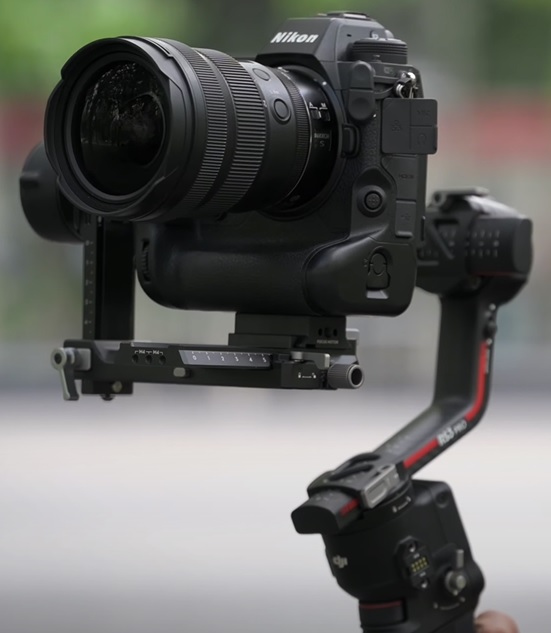

One of the favorite facts about this gimbal is it’s super user-friendly; the ergonomics, monitoring, and usage are just wow. The only negative side of this gimbal I have noticed is it carries a little extra weight of its own body, approximately 3.3 pounds.
The unique feature is that the gimbal allows the remote monitor through the Ronin 4D hand Grips, DJI Master Wheels, and Force pro. Also, the mobile application support is complimentary.
But if you need the physical interaction with the control, that can be arranged through the integrated control dials carved on the body of the gimbal like the fine-tuned knob, slider, and front dial.
Although there is an additional Teflon-coated component that is used to minimize the friction during the mount of the heavyweight. With reference to the focusing, let’s not forget that the gimbal is well synchronized with the LiDAR Focusing technology, one that manages the focusing and makes things easiest.
The gimbal is trained to shoot in different modes but availing ActiveTrack Pro makes things super exciting. As I said, using this gimbal is no hassle; the mounting and stuff can be done like the older version through the dual-layered quick-release plate.
However, the grip of the Automated axis lock kick starts the creativity in the gimbal by expanding the artistic horizon of its axes.
Along with the whole easiest control and connectivity, did I forget to mention the largest visionary 1.8 inches full-colored OLED Panel, one that gives an efficacious vision of what is going on?
You can say the power in the gimbal never runs out because the 1950 mAh battery manages the backup by granting 12 hours of runtime in a single charge and can be recharged in just 1.5 hours; pretty amazing, right?
Bottom line- Okay, so far, this is a mind-blowingly impressive gimbal with so many upgraded updates. I found this gimbal master in shooting vlogging and longest time fastest moving subject with ease, Thanks to its versatility. It’s definitely the best gimbal for the Nikon Z7 II.
Pros
- Upgraded stabilization algorithm
- Strongest Carbon fiber construction
- Troubleless controls
- Additional Extensive ports
- Hassle-free LiDAR compatibility
- Widest 1.8-inch OLED panel
- Rarest Teflon-coated component
- ActiveTrack and Ronin image transmitter supporter
Cons
- A little out of budget
- Bulkier than alternatives
3. DJI Ronin-SC
How creative do you want your tool to be, the tool that actually brings the fascinating creativity in the footage; Well, a lot. If you are searching for something so versatile, that can easily carry your wish of producing something exceptional, then this might be your ultimate option: DJI R-SC.
Now, if you are wondering about this other DJI gadget, you should know that the brand has something to offer that others don’t: The intuitiveness, the performance, the design, the ergonomics, and much more.
Gimbal – DJI RS SC Gimbal
Camera– Nikon Z7 and Z7 II
Highlights– One of the finest editions by DJI Ronin, one with improved technology and performance; Ideally with a tough body still the lightest 2.4 pounds weight. Intuitive intellectual and 11 hours of straight power backup, and the best part Is how effectively it allows the association of accessories holding the 4.8 pounds of payload capacity is absolutely amazing.
Why should you buy a DJI Ronin-SC Gimbal?
I can count on numerous factors, but let me stick with the most convenient one; the economic one. Yes, after going through the other two, a masterpiece of DJI with so much potential, I figured I might need a little cost-efficient gimbal.
This DJI Ronin SC satisfies that criterion; it has the best design and control that can be aligned with either Nikon Z7 or Nikon Z7 II and allows one to see the world differently without breaking the bank; ideal for beginners.
Creative Features–
DJI Ronin SC is definitely writing the new definition of creativity, striking the comfortability only to result in uniform stability in the shot result.
The gimbal is configured with a smart algorithm and improved processor only to get you a taste of professionalism in the picture. One thing that can be achieved by either Nikon Z7 or Nikon Z7 II.
The better processor has led to better performance unleashing creativity in the open world. Now let’s talk about creativity, so I am fond of trying different shoots, and that can be offered by this Ronin SC gimbal.
The panorama, 360, Time-lapse, motion-lapse, and others. Except that the gimbal is empowered enough to enable the sport mode with just a click of a button on the barrel. Also, the gimbal is trained to keep an eye on the subject through ActiveTrack 3.0.
The gimbal holds the potential to carry 4.8 pounds payload, which means a lot of accessories can be added with this gimbal. But complementary to this, all the gimbal ability to carry add-ons is all effort of the ¼ inch to 20, and 3/ 8 inch to sixteen accessories mounted in the design.
The configuration allows full support for the microphone and LED lights kind of stuff.
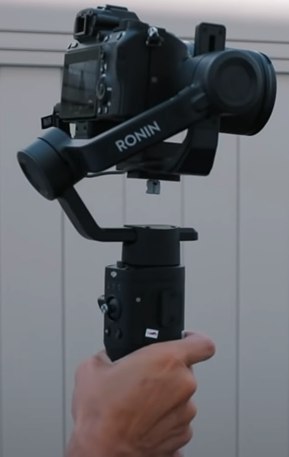

I couldn’t find any difficulties mounting the camera or any other accessories. All I needed to do was balance the camera in a lock position, mount it on the plate and slide it in with the quick-release plate.
There are also two different locking modes associated with the gimbal; these methods secure the camera and avoid the whole frequent rebalancing hassle.
The Gimbal body is the strongest and most durable, But that doesn’t affect the ergonomics. It is considered the ultra-portable model because of its compact size and lightest 2.4 pounds weight.
I can manage and monitor all the gimbal’s controls through different aspects. Wireless camera control can be achieved anytime through Bluetooth connectivity.
There is no shortage of power. I can say that confidently because I haven’t faced any power Interruptions; I believe it’s all working on a 2450 mAh rechargeable battery.
These lithium-ion Polymer batteries are designed to run the constant shooting operation for up to 11 hours on a single charge. Once the battery gets drained off completely, it would take no time to fully charge within approx 2 hours. Two hours through the USB type C port charging.
Bottom line- Another day, Another DJI miracle; Now you believe so, don’t you? I hope you, too, are amused with the exciting feature this gimbal holds. What advanced creativity it possesses and still so down-to-earth control. This might be the best of all gimbals you can get, so go for it.
Pros
- Automated creative shooting modes
- Hassle-free Auto Calibration
- Support Active Track 3.0
- Easy sports gear mode enabling
- Reasonably economical
- Compact size and lightest weight
- Modular designing and control
Cons
- Lack key intelligence
- Nonfunctional sometimes
4. MOZA AirCross 3
For the longest time, people weren’t aware of the unrivaled competency served by this Moza brand; until they confronted one of them. Just like I did. It was my first experience with the Moza, and I chose Moza Aircross; trust me, it hasn’t let me down.
The gimbal is something unique, a sophisticatedly designed body with tons of versatile features, one that can be relied on if you are out there looking for some cinematic shots.
Gimbal – Moza Aircross 3 Gimbal
Camera– Nikon Z7 and Z7 II
Highlights – A very unique combination of professional features is surrounded in this Moza’s creation, one that compels to establish the streak of shooting cinematic shots. The compact body, easy ergonomic with the lightest weight of 2.9 pounds, intends to give more and more creativity by adding 7 pounds of payload.
There isn’t much to worry about regarding the longevity of shooting because the gimbal has the longest 19 hours of battery runtime; all at this pocket-friendly budget is literally a miracle.
Why should you buy the DJI RS 3 Gimbal?
I considered this gimbal best because its ease and convenience with the Nikon Z7 and Z7 II made me feel like it’s definitely a match in heaven.
The gimbal has so much potential, like enhanced UI, Improved processor and sensor, and standard design, but if you look at the price, it’s way too economical; so yeah, that’s the best thing about it. If you look for the compatibility, the designing, and intelligence of both Z7 and Z7, ii have the greatest match with this gimbal.
Creative Features–
I personally believe that Moza Aircross 3 is my personal favorite; there are so many fruitful factors that can justify it. The design: Have you seen this gimbal? It’s so finest and attractive but strong and durable at the same time.
What creative is the foldable aspect of the gimbal, one that allows the gimbal to fold down into the size of an A4 sheet, which makes it quite a star in transportation and storage aspect
The whole calibration and mounting are straightforwardly effortless; During my time with this gimbal considerably with Nikon Z7 and Z7 II, I haven’t gone into single trouble trying to add the cameras on the gimbal.
The balancing stuff is easiest because of the manual lock and each axis to manage accordingly. The efficacious Shoe mount and thread options complement the calibration, while the Auto tuning AI protects the functionality of the gimbal.
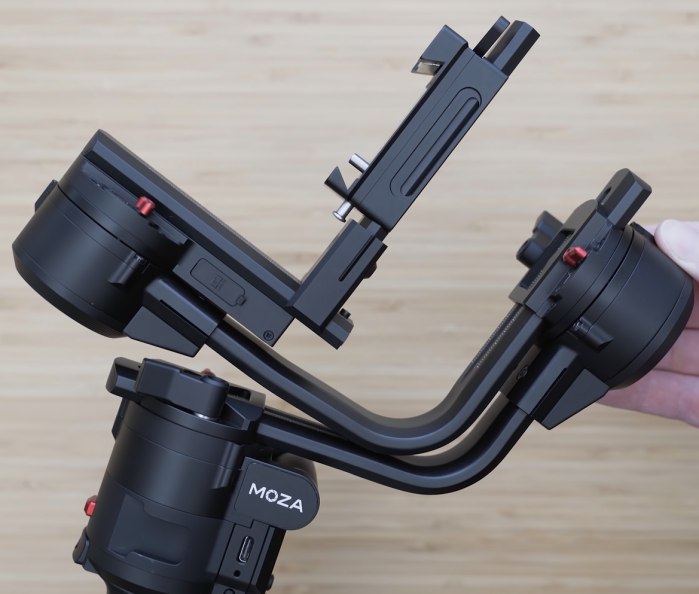

There’s also a distinct three-latch locking system, one that secures the balancing of the camera or other accessories. Now the internal working: The motor, something that stole my heart.
The upgraded motor works intriguingly only to save power and enhance performance. But it’s the deep red algorithm that has everything in control. This peculiarly curated algorithm monitors and manages the gimbal control and behaviors ending in a better stability option.
Talking about the artistic aura, the Aircross 3 is capable of literally anything; The advancement of Z7 and Z7 II finally come into use when the gimbal indulges in shooting different modes, like the four-follow mode, the inception mode, the sports gear 2.0 mode or even the FPV. You won’t be disappointed with the result.
There is no more hassle in switching alignment from portrait to landscape; super easy; choosing photo shutter or video recording is also super easy, no more struggle.
Testing the gimbal potential, the gimbal is capable enough to carry the 7 pounds of payload, which is quite enough for the series of additional accessories. The Auto Tuning AI calculation is considered significantly useful during such a heavy mounting case.
Like the control, the monitoring is also healthy in this gimbal; it can be held through the updated OLED display unit with the greatest User Interface. The display panel aligns with the graphic sidebar menu and a simpler layout just to make a thing exciting.
I have become obsessed with the gimbal’s ability to recognize body and face in order to keep pace with their movement. Due to the courtesy of a spark power supply, you will get to experience the longest time of operation.
The Lithium-ion battery with the fastest performance empowered by the 3500 mAh grants 19 hours of runtime in a single charge with a promise of recharging the potion in 1.4 hours through the two separate USB Type-C ports.
Bottom line- Okay, no way, Moza can disappoint you in any way, just as I’d say. The certain intelligence and stabilization tactic is over the top level, but the design is also quite a fascination itself. There will be no better purchase than this Moza Aircross under that cost-efficient range.
Pros
- The improved 19-hour battery
- Better OLED display and UI
- Manual position 2.0
- Compact and foldable designing
- Higher Payload potential
- 3-latch locking system
- Follow modes and portrait-landscape switch mode
- Auto Tuning enhanced AI
- Affordable price tag
- The deep red algorithm
Cons
- Control placement could be better
5. Zhiyun Weebill 3
After the DJI Fame, one of the most known and loved brands that have the potential to match the versatility of DJI creation can be only the Zhiyun-Tech.
I personally am fond of this wonderfully curated stabilization tool; I have had quite a time exploring its profound tactics and methods invoked to balance the jiggering in the footage. Also, the gimbal isn’t much of a high range which can be really crucial for any beginners.
Gimbal – Zhiyun Weebill 3 Gimbal
Camera– Nikon Z7 and Z7 II
Highlights– The High-performer, advanced and improved gimbal from the Zhiyun-Tech design house standing in front of me with such heavenly potential. The never-better enormous battery granting 21 hours of constant work and optimized UI has set a goal of marvelous shooting to the highest. Even when the payload is not specified, the gimbal manages to carry heavier accessories with its own body weight of 2.4 pounds.
Why should you buy the DJI RS 3 Gimbal?
As I said, there is no way I am not going to list the finest option from Zhiyun, and it’s because they are basically the god of innovation. They have poured down high-tech intelligence in this weebill 3, which makes it quite potent.
But what fascinated me most was the gimbal’s design. Yes, the extendable grip, revised design, and easiest calibration are way too ergonomic even for the advanced camera like Nikon Z7 and Z7 II.
Creative Features–
Let’s start with the thing I like the most, gimbal’s design. So, this magnificent piece of perfection has the most attractive body. The revised L-shaped body with the improved sling 2.0 structure is attractively amusing to every bare eye. The design has an extendable sling grip with a handle that can be expanded according to the need and additional wrist support for ease.
The Gimbal body is composed of top-notch material, adding years to its life while the weight of its body remains the least at 2.4 pounds, not to create hassle with the Z7 585-gram weight or Z7 II 615-gram weight.
Now the configuration of the gimbal’s body includes a base expansion, one that is constructed with the built-in 3.5mm audio port for you know better audio recording during vlogging.
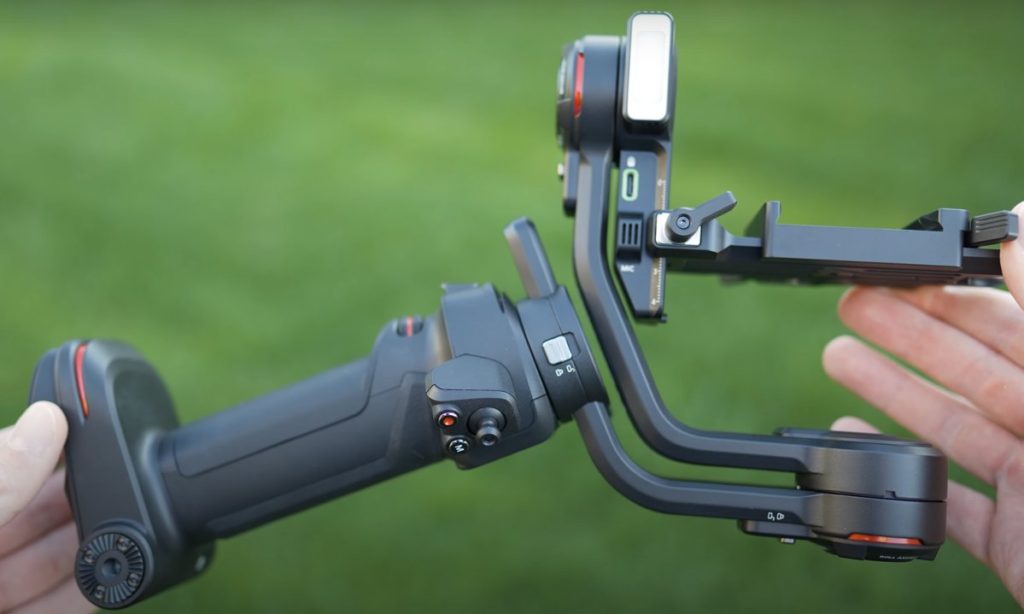

Referring to the performance, the gimbal comes with a high-end upgraded motor that reverts the optimized stabilization algorithm through any challenging shooting mode, like the 360 rotation and motion function.
The dark light shooting has been taken care of by the fill light of the gimbal that comes with four colored filters.
We haven’t talked about the gimbal and my camera Z7 and Z7 II compatibility, so it wasn’t much of a task either. Due to the intuitive dual quick-release plates, the camera mount is super easy, and that too without rebalancing.
The magnetic wrench gives hands to secure the camera, while the improved Axis lock makes sure the camera doesn’t fall out while expanding the horizon of creativity.
The connectivity of the gimbal is super easy, held through the 2.4 GHz Wi-Fi- and 5.0 Bluetooth. While the Zhiyun mobile phone application lets you monitor the camera parameters.
The gimbal is associated with an improved OLED Touchscreen with a better User interface sized 0.96 inches to do the inception. While the easiest wheel control and trigger button are injected to adjust camera parameters and change shooting modes, respectively.
The specific payload of the gimbal is not disclosed by the brand, but from my experience, the gimbal can carry Z7 and Z7 II moderate weight and topping some additional accessories as well.
There is nothing that can beat the gimbal power system. Because the three powerful lithium-ion batteries are empowered, 2600 mAh has the intention to provide constant operation for 21 hours straight with the 2-hour charging time only. Pretty amazing, right?
Bottom line- Last but not least, Zhiyun-tech didn’t let you down either; the innovation of this gimbal cannot be matched with any other gimbal, and the way it’s designed, the control blends with a high-tech camera like Nikon Z7 and Z7 II is simple jaw-droppingly. So yeah, blindly go for it.
Pros
- Revised L-shaped design
- Additional Built-in Microphone
- Optimized stabilization Algorithm
- In-built Fill lights with four filters
- Magnetic wrench mounting
- Reasonably economical
- Easiest wheel and trigger button control
- 21 hours of battery backup
Cons
- Payload couldn’t be specific
- I found fluctuation with heavy mounting
What makes the gimbal essential for Nikon Z7 and Z7 II?
Gimbals are one of the most innovative tools whose sole purpose is to serve the high-quality stabilization in footage in order to transform any ordinary shot into a cinematic shot.
This motive can be achieved through the pivoted support system of the gimbal and the rotation of three or two axes. The gimbal requires the camera to be mounted on it, too, and then they unleash the heavy creativity with every passing moment.
Now Nikon Z7 and Nikon Z7 II are two wonderfully intelligent cameras with remarkable potential to frame live moments. They both have the 24.5 Megapixel sensor to shoot the photo, but it’s the ability to film up to 4K videos at the highest speed is what we are going to discuss. Both of the cameras are video-centered, and they master filming professionalism.
However, even with the Five-axis stabilization mechanism, the camera cannot exactly deliver buttery smooth footage. There, you will be needing a professional gimbal tool to manage the steadiness in every shot. Although apart from the stabilization, the gimbal has unleashed its creative benefits through their attachment as well. These are
- Gimbal can allow Z7 and Z7 II 24 megapixels to catch a better shot of the low-angle and fastest-running subject.
- They enhance comfortability because the Z7’s 585-gram weight and Z7 II’s 615-gram weight can be a little heavy sometimes.
- They have the potential to stand on their own while you intend to shoot a long period of video.
- The gimbal with Z7 and Z7 II opens millions of doors to artistic shooting through different modes like multiple follows motion function mode.
- The gimbal attachment with the camera can let you cover shooting at the trickiest angle and underwater or aerial scenario.
- The gimbal is easiest to assemble, which means no more trouble with the installation and stuff.
- Working of Z7 and Z7 II with an ideal gimbal can save a lot of time and physical effort and still get you a butter-flow smooth shot.
- There are other light and microphone accessories required for Z7 and Z7 II; they can be easily attached through the gimbal.
- The security of your precious camera enhances to peak; the firm hold on the camera will prevent any accidental damage.
These all are the reasons why gimbals are considered essential for advanced cameras like Nikon Z7 and Z7 II; because it only makes things more interesting!
Know your Camera; Nikon Z7
Everyone’s favorite Nikon has taken the highest step to imprint their all-mighty competency in this Nikon Z7 camera. The professional perfectionism with revolutionary algorithms and upgraded sensors to create the high-resolution picture. The brand curated this wonderful exception at the End of August 2018.
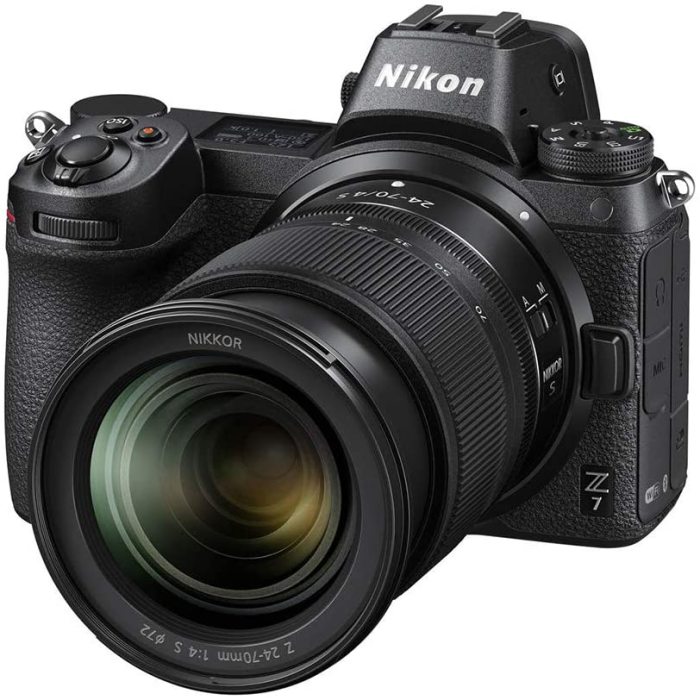

The advanced fill of innovation has been justifying the intriguing ability of the camera, the better autofocus; the improved ISO means the low-light filming and one of the rarest the updated image stabilization, everything is perfect.
The camera held a strong and empowering battery, and the design of the model is impeccable. Consumed with so much intelligence, the camera comes with the price tag of $3400 at launch, which eventually falls to $2300 at the current time.
Know your Camera; Nikon Z7 II
The updated version of the Nikon Z7, this Nikon Z7 II, has some serious improvement and versatility that leaves the user astonishingly impressed.
The potential to draw the high-resolution image is the same as in the earlier edition but the processor and algorithm are way better than it. The brand came up with this masterpiece in the mid of October 2020 for solely professional photography.
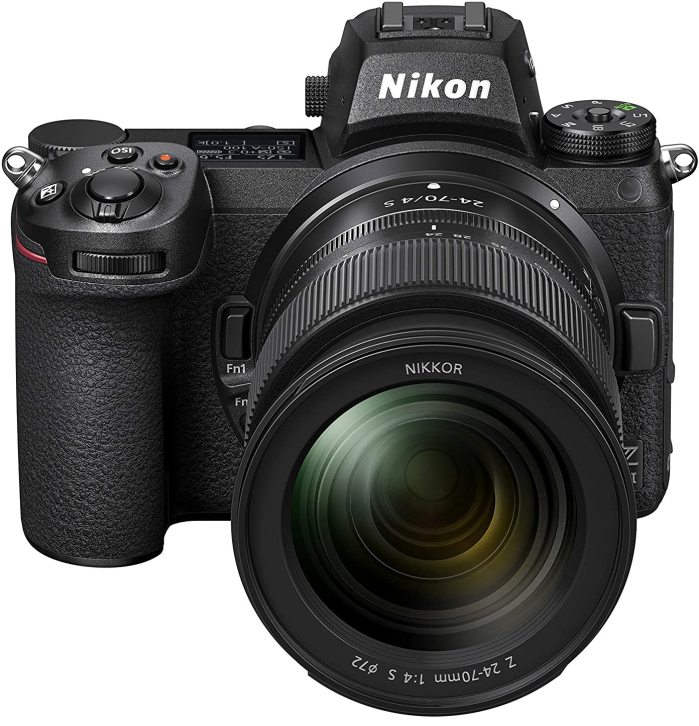

Now, apart from the processor, there are a few more upgrades you will see within this Z7 II, like how magnificently it traps the dark hour subject or high-quality vlog.
The camera comprises all the unrivaled creativity that can make it quite a star. The speed, performance, and potential of everything are way too impressive for ordinarily. Clearly, the camera intends to be the beast that subjects the affordable price considering the immense flow of intelligent features; the price of the camera is $3000 at launch, which remains the same at the current date.
Let’s throw light on the Nikon Z7 and Z7 II’s differences and similarity
As per my expertise, I don’t find much of a difference between these two masterpieces by Nikon; but considering the upgraded launching, there might be some; let’s get that figured out.
Z7 and Z7 II Features that do get along
Sensor– Both of the cameras have the same BSI-CMOS sensor-sized full-frame with the 46 Megapixel resolution to get the best, high-quality still shot.
ISO– When it comes to the dark hour filming, both cameras gave their best; both have the Auto ISO and the Sensitivity range from ISO 64 to ISO 25600, which eventually can be expanded to ISO 102400.
Focusing- Both Z7 and Z7 II have the auto and Manual focusing types that can be used in continuous-servo AF, Full-time Servo, Single-servo, and Manual focus with the 493 phase detection point
Video Recording- Both cameras can do interval recording, with a recording limit of 29 minutes and 59 seconds. Same as go, they both have an in-built stereo microphone for hassle-free audio
Viewfinder- With the better vision approach, both cameras have this in-built electronic viewfinder which has a 3.6 million dots resolution. The viewfinder is sized at 0.5 inches and has 100% coverage and approx. 0.8x magnification.
LCD screen- Apart from that, there is also a high-quality tilting LCD panel with fingertip touch controls in both cameras. The LCD as a secondary status display size is 3.2 inches and has a 210K dot resolution.
Stabilization- To manage the shabby jittering shots, both cameras have the sensor-shift five-axis image stabilization that works with five shutters stopping to compensate for the camera shake.
Interface- Except for the storage, every other input and output interface of these cameras is the same. And the wireless connectivity can be established with intuitive Bluetooth and Wi-Fi in both cameras.
Lens Mount- Both the camera Z7 and Z7 II are configured with the Z mount structuring, which justifies that both cameras can use the Nikon Z mount lenses only
Engineering– Both cameras, Z7 and Z7 II have been engineered with almost the same approach and structuring. Both have a weather-sealed body, magnesium alloy composition for strength, and the strongest durability.
Z7 and Z7 II Features that don’t get along
Processor- Configured in the same design and intelligence, both Z7 and Z7 II differ in processor format. The Z7 has a high-performer EXPEED 6 processor. While the Z7 II is an upgraded camera that has double power with a Dual EXPEED 6 processor
Autofocus – both Z7 and Z7 II cameras have the same autofocus with the same phase-detection points. But the Z7 has the -2 to +19EV focus detection range, while the Z7 II has the -3 to +19 EV Focus detection range.
Videography- Even though both of the cameras are potent enough to shoot Ultra HD 4K video, the Z7 is capable of filming UHD 4K at 30p and full HD at 120p. While the Z7 II can shoot UHD 4K at 60p and full HD at 120p
Battery- Both cameras have Recharge through Type-C lithium-ion Battery with runtime is different in both Z7 and Z7 II cameras. The predecessor Z7 is potent to grant 330 shots and 85 minutes of filming in a single charge. While the Succeeders Z7 II can gibe 360 constant shots and 105 minutes of filming in a single charge
Storage slot- Both cameras have different storage card attachments. Z7 has a single slot for the CFexpress Type B or XQD card. While the Z7 II has a dual slot reserved for CFexpress Type B//XQD or SDHC or SDXC UHS-II format card
Shutter speed– Nikon Z7 and Z7 II both have the mechanical focal plane and an electronic shutter, but the shutter plays its part, and Z7 gets the 9-fps continuous shooting speed. While Z7 II gets the 10fps continuous shooting speed
Weight– Even when the camera has the same ergonomics and attractiveness, Nikon Z7 II is considered heavier, with the 615 grams weight the body only. While the Z7 has the lightest 585-gram weight, possibly because of the dual processor
Price– Both the camera Z7 and Z7 II have some common features whilst some different features, but the price of Z7 was announced as $3400 for the body only while the price of Z7 II was announced as $3000 for the body only.
Frequently Asked Questions (FAQs)
Q. Which is the best gimbal brand for Nikon cameras?
Brands not only define that unique impression, but they have a key part in the counterfactor of reliability, efficiency, and quality, which is why choosing the right brand is crucial for an ideal purchase. Now there are numerous brands serving advanced gimbals in the market claiming to be the best, but is it okay to trust them just like that? If you are a newcomer, you should know some of the brands that have the best service, like DJI, Zhiyun-Tech, Moza, and FeiyuTech. These brands have been serving the hot cup of reliable service for a long time, so these brands are trusted enough for the gimbal for the Nikon case.
Q. Is Nikon Z7 II worth upgrading to Nikon Z7?
Well, technically, Nikon didn’t differentiate these cameras much; the Nikon Z7 and Nikon Z7 ii both are professional cameras with some high-level advances. Except for the 45-megapixel resolution and 4K video shooting with 5-axis stabilization, there isn’t much I can find different in these cameras. However, the Performance rate of the Z7 II is precisely higher than the Z7 because of the dual image processor, which can be beneficial. Also, the buffering rate, the live filming, and the battery potential are better than in the previous edition. So yeah, considering the quality performance Z7 II is definitely worth upgrading.
Q. Which is the best two-axis or three-axis gimbal?
Depends; if you will look through the creativity point, there is no match for the 3-axis gimbal artistic aura where the convenience can be better at 2-axis. The 3-axis gimbal has a better stabilization potential than the 2-axis gimbal because they stabilize through three axes (pitch, roll, and tilt), and they have more intelligence and ergonomics. While the 2-axis gimbal usually has the two (pitch and roll) axis rotation but they have the simplest configuration, easy interface, lightest weight, and affordable price. Modern photography prefers a three-axis gimbal at best.
Q. Are gimbals hard to control?
To be honest, I have been using a gimbal for a while, and it never felt problematic or complicated at all. So, from my experience, I must say gimbals are not hard to control. However, this factor cannot be directed straightforwardly because the controls vary through different brands and their editions. Usually, the gimbal control can be managed remotely via the mobile phone application, or the physical interaction can be held through the dials, wheels, and sliders configured on the grip handle or body. The connectivity is also not much of a deal; the simple Bluetooth and Wi-Fi do the job. But you can make sure of the easiest control and monitoring before the purchase.
Conclusion
Okay, time to wrap the article; well, I have listed as many as every detail that would help you get better at photography with the Nikon Z series.
I have mentioned the best gimbal with advanced features and design that can be paired with both Nikon Z7 and Z7 II, only to make things artistic.
Along that, I have also detailed a little more about the camera itself, the fundamental yet significant upgrades, and the differences between Z7 and Z7 II cameras.
Even though they are a wonderful tool to be used by professionals, you need to look a little harder over their specifications, which are sufficiently noted above. Now all you have to do is pluck out one of the most deserving gimbals for them.
The last decision would always be yours, no matter what. So think like a professional, and make the wise choice for your Nikon Z7 and Z7 II sake. Align the significant factors and narrow down the down that suits your standard and need and voila you will have the right one.
Now leaving the further step to you, I would like to bid farewell with the hope that I have helped you a little in your way to achieving professionalism.
Don’t forget to leave your feedback in the comment section below and share the post so that others might get along with the high-level shooting as well. So Stay safe, stay creative until next time!

